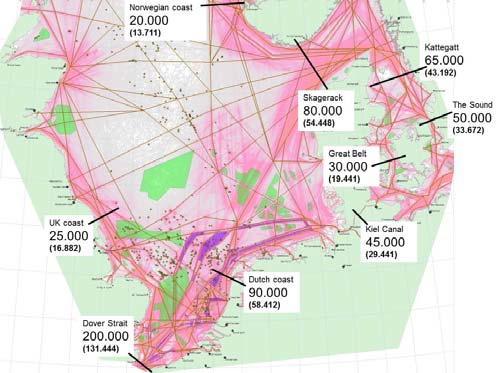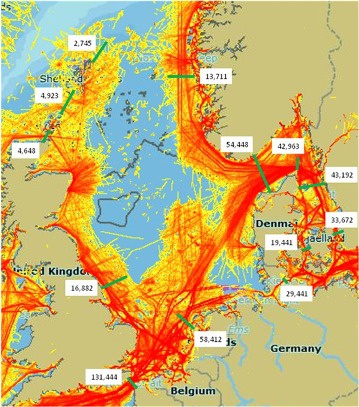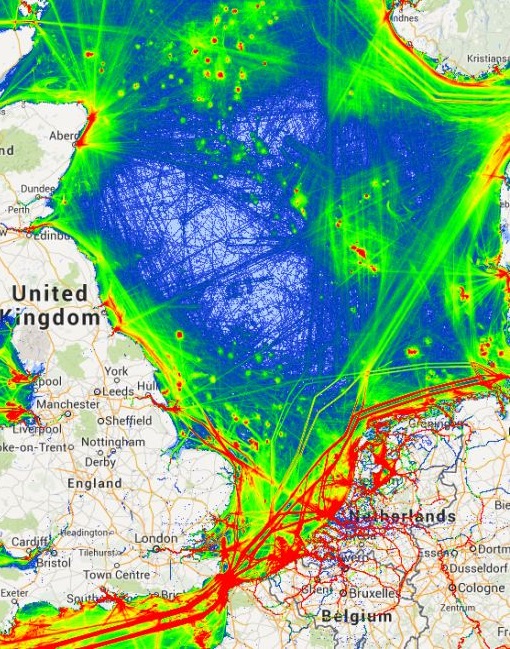No edit summary |
No edit summary |
||
| Line 1: | Line 1: | ||
[[Category:(NS)Shipping]] | |||
<ul class='nav nav-tabs'> | <ul class='nav nav-tabs'> | ||
<li class='active'><btn data-toggle='tab' class=''>#tab1|General Information</btn></li> | <li class='active'><btn data-toggle='tab' class=''>#tab1|General Information</btn></li> | ||
Revision as of 12:30, 10 August 2018
| Layer Info | |
|---|---|
| Category | Shipping |
| Editable | No |
| Data Source | Shipping simulation |
| Values | |
| Low | |
| Medium Low | |
| Medium | |
| Medium High | |
| High | |
| EXTREME | |
Description:
A cargo ship or freighter ship is any sort of ship or vessel that carries cargo, goods, and materials from one port to another. Thousands of cargo carriers ply the world's seas and oceans each year, handling the bulk of international trade. Cargo ships are usually specially designed for the task, often being equipped with cranes and other mechanisms to load and unload, and come in all sizes. Today, they are almost always built by welded steel, and with some exceptions generally have a life expectancy of 25 to 30 years before being scrapped.
MSP Challenge 2050:
Cargo Intensity is a month-by-month, computer generated data layer showing a 'heat map' of cargo shipping. The shipping simulation considers both international cargo shipping in and out of the entire North Sea region, as well as short sea shipping within the North Sea region.
The shipping simulation follows this logic:
- Month by month, tanker, cargo, passenger and ferry ships want to go from specific ports to specific ports, within as well as in and out of the North Sea region.
- These ships find a safe yet short route for their travels. Ideally they move in a straight line. To ensure the route is safe, they will opt for deeper waters and designated shipping lanes applicable to their type.
- More ships following the same route means a higher intensity of ships that month, and thus redder lines on the intensity 'heat map' layers.
ON THIS TAB VISUAL CONTENT IS PLACED



 Co-funded by the European Union.
Co-funded by the European Union.